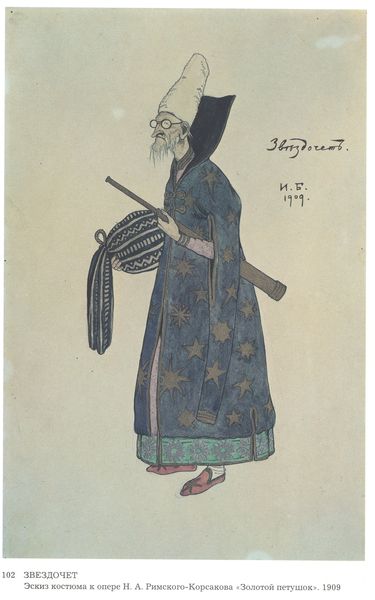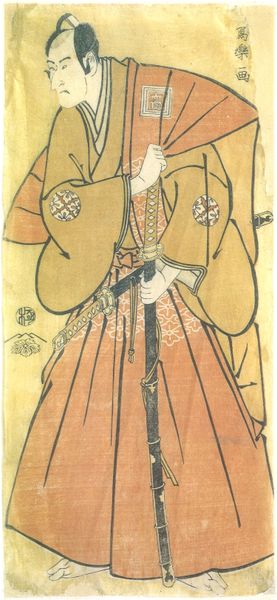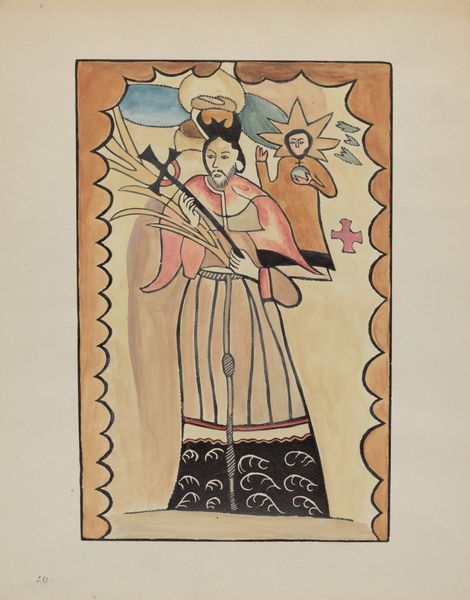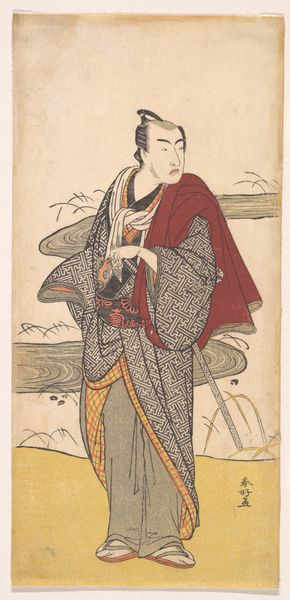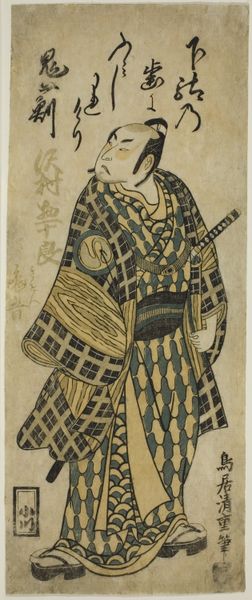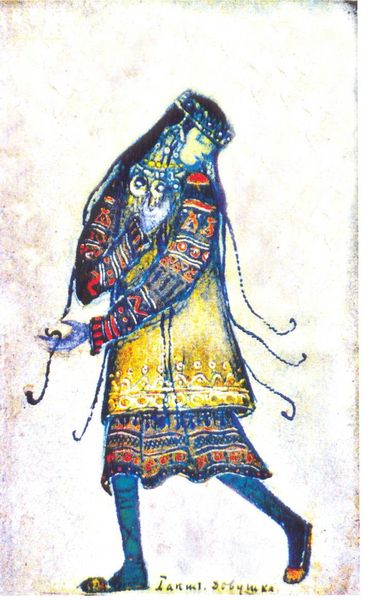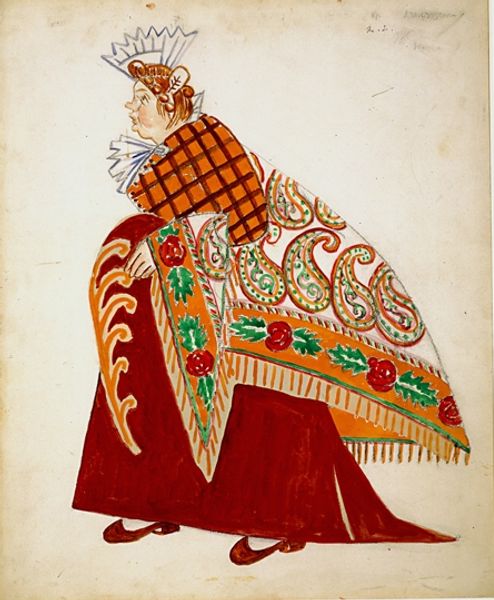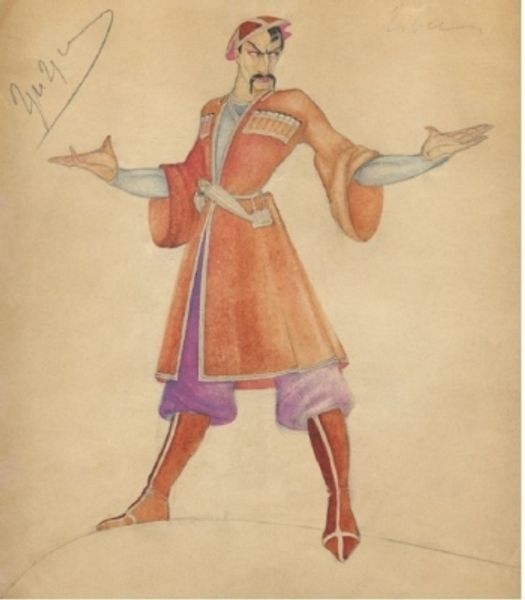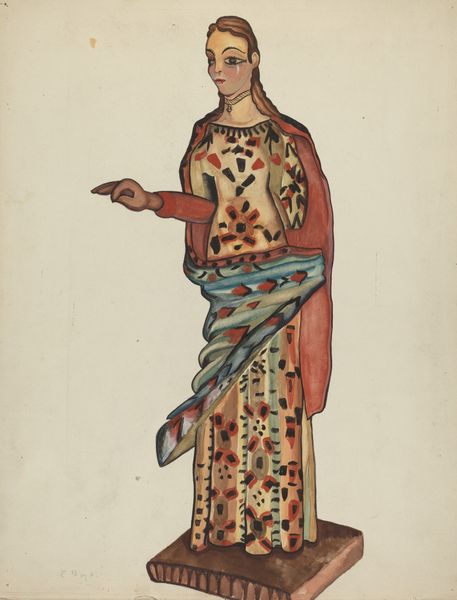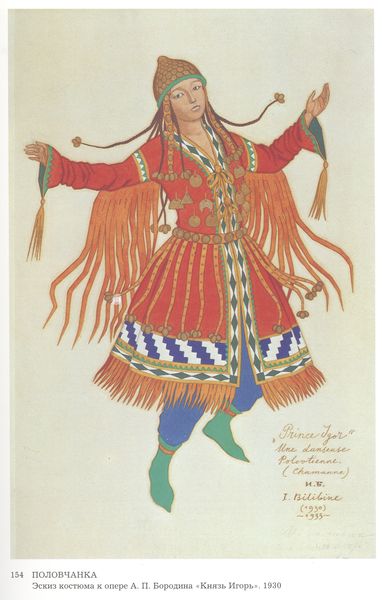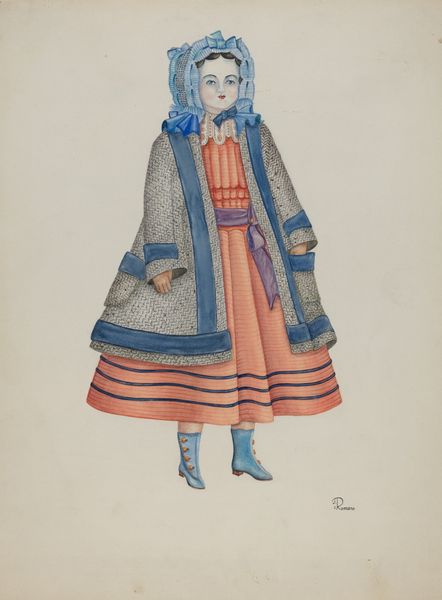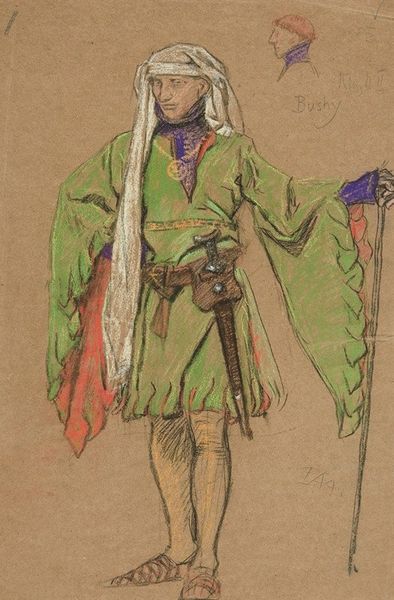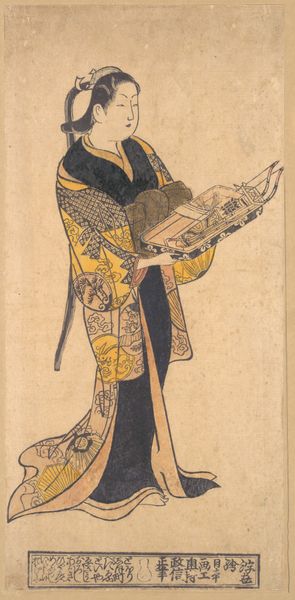
Costume design for the Opera, The Golden Cockerel, by Nikolai Rimsky-Korsakov 1908
0:00
0:00
drawing, textile, watercolor
#
portrait
#
drawing
#
textile
#
figuration
#
watercolor
#
costume
#
symbolism
#
russian-avant-garde
#
watercolour illustration
Copyright: Public domain
Curator: Take a moment to regard this watercolor drawing; a costume design realized by Ivan Bilibin in 1908, prepared for Nikolai Rimsky-Korsakov’s opera, "The Golden Cockerel." What is your initial reaction? Editor: It strikes me as surprisingly gentle. Given the context of opera, I'd expect something grander, but the delicate watercolor and the pastel hues create a feeling of lightness. The detailing on the clothing, though intricate, doesn't overwhelm the figure. Curator: That perceived gentleness, I believe, serves to highlight a subtle commentary on power. Rimsky-Korsakov’s opera, based on Pushkin's fairy tale, offers a critique of autocracy amidst the backdrop of Russia's socio-political tensions following the 1905 revolution. This costume, intended for the Queen of Shemakha, presents her as seductive and alluring, traits that become instruments of political manipulation within the narrative. Editor: The rendering definitely contributes to that duality. Look at how Bilibin used line to create patterns that mimic traditional textiles, yet the colors and their application keep it within a dreamy space, like something seen through gauze. There's almost a deliberate lack of depth. Curator: Precisely, the stylization is key. Bilibin's involvement with the "World of Art" movement saw a revival of interest in Russian folklore and decorative arts. Here, we observe his interpretation of Eastern aesthetics, filtered through the lens of Russian artistic sensibilities. The Queen’s exoticism isn’t necessarily about ethnographic accuracy; it embodies an "otherness" that the Russian court both fetishized and feared. Editor: And the figure herself is rather enigmatic. She has a passive affect despite holding symbols of power: the staff, the flower. The patterning on the robes, full of intricate motifs, seems almost to trap her, which might symbolize restriction rather than just decoration. Curator: Considering Bilibin’s involvement with stage design, the costume needed to project an image intelligible to an audience. By fusing the familiar with the exotic, Bilibin crafted a visual language which helped audiences comprehend the Queen of Shemakha's seductive, dangerous nature and her impact within Rimsky-Korsakov's sociopolitical allegory. Editor: It’s a beautiful study in contrasts. Bilibin used precise details, like in the crescent-moon staff, combined with softer application of color to create a layered, complex, and perhaps even deliberately destabilizing image. Curator: An incisive conclusion. Bilibin presents more than ornamentation; he invites reflection upon power and its multifaceted performances within the Russian state. Editor: Indeed. This costume sketch is like a looking glass held up to reveal how culture and society play out on the stage.
Comments
No comments
Be the first to comment and join the conversation on the ultimate creative platform.
